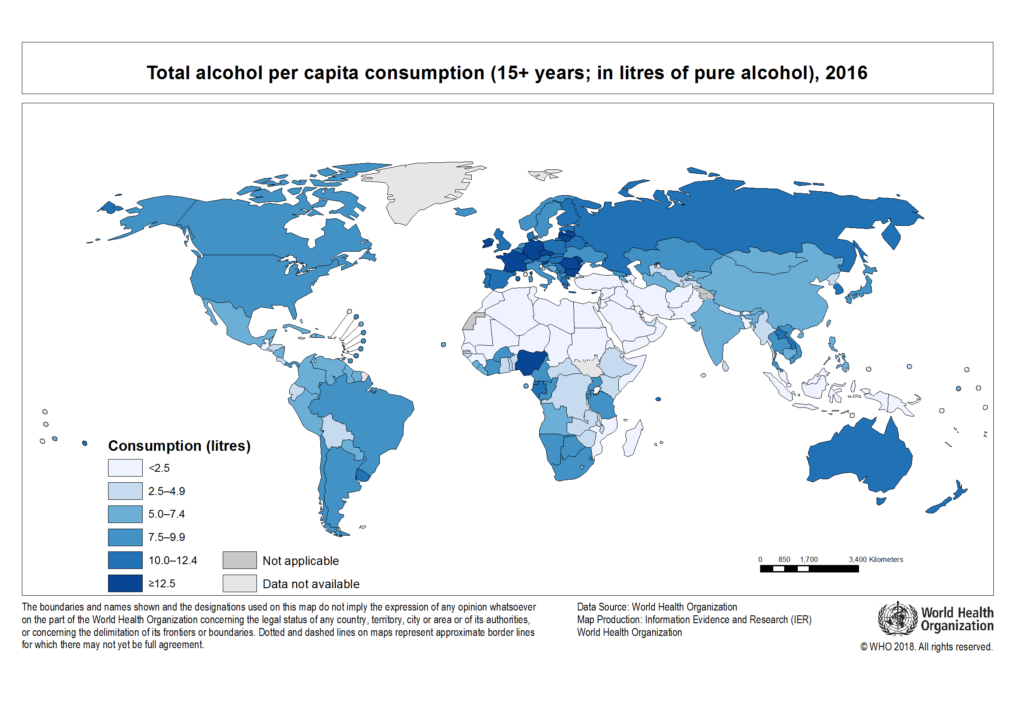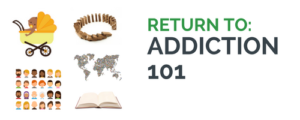KEY FACTS
- Over the course of their entire lives, 29.1% of U.S. adults (18 and older) have met criteria for an alcohol use disorder, and 9.9% met criteria for another drug use disorder (e.g., opioid, cocaine, or marijuana use disorder).
- In the past 12 months only – corresponding with “current” substance use disorder – 10.5% of Americans aged 12 or older (29.5 million) met criteria for an alcohol use disorder and 9.7% (27.2 million) met criteria for atleast one drug use disorder over the past year.
- For adolescents 12-17 years old, 5.0% met criteria for DSM-IV alcohol or other drug use disorder in the past 12 months.
- Note To Readers on Differences in DSM-IV and DSM-5 Diagnostic Criteria
-
In 2013, the American Psychiatric Association (APA) published the fifth edition of the Diagnostic and Statistical Manual of Mental Disorders (DSM-5). In this new version of the DSM, there was a major change to the substance use disorder diagnosis procedures from the fourth edition (DSM-IV).
CLICK HERE FOR A COMPARISON BETWEEN THE DSM-IV AND DSM-5
Since prevalence estimates of substance use disorder in the United States are typically based on DSM criteria, newer studies will have used the DSM-5 criteria, while older studies will have used the DSM-IV criteria, or earlier versions.
Data presented in this section use DSM-5 criteria unless otherwise stated. Some estimates using DSM-5 criteria (e.g., adolescents) are not yet available. Data will be labeled accordingly to indicated use of DSM-IV criteria to calculate prevalence estimates.
This section presents prevalence rates of substance use disorder in the U.S. across the total population and different demographic segments of the population. Substance use disorder prevalence rates may vary depending on characteristics such as sex, age, race/ethnicity, and where they live. Differences in prevalence occur for a variety of reasons, including cultural and sub-cultural variation and as a result of biological, psychological, and social differences.
SEX
Compared to U.S. adult females, males are twice as likely to meet criteria for alcohol use disorder in both the past 12 months and over the course of their entire lives.
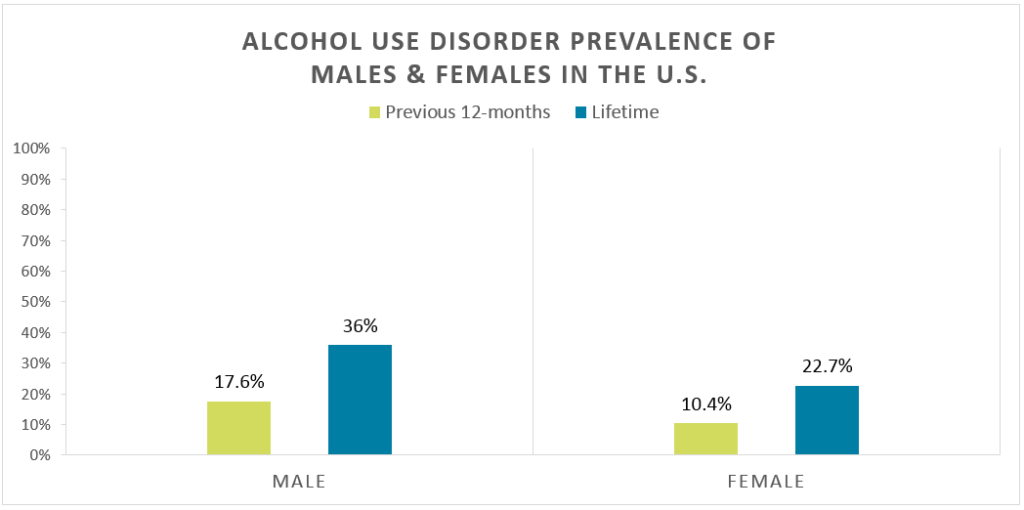
Males are also about twice as likely to meet criteria for a drug use disorder other than alcohol in the past 12 months and over the course of their lives compared to females.
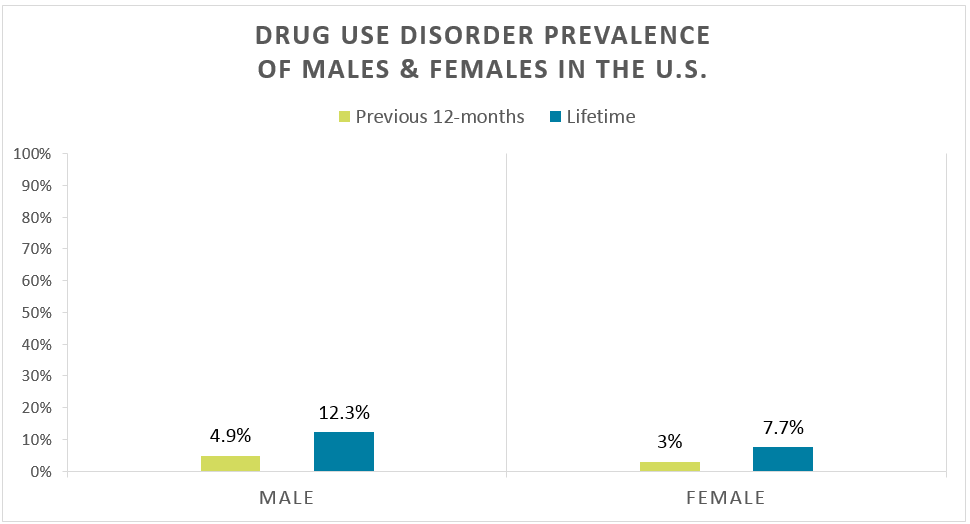
When looking only at adolescents ages 12-17, there are no differences in the prevalence of DSM-IV alcohol use disorder, drug use disorder, or any substance use disorder (either alcohol or another drug use disorder).
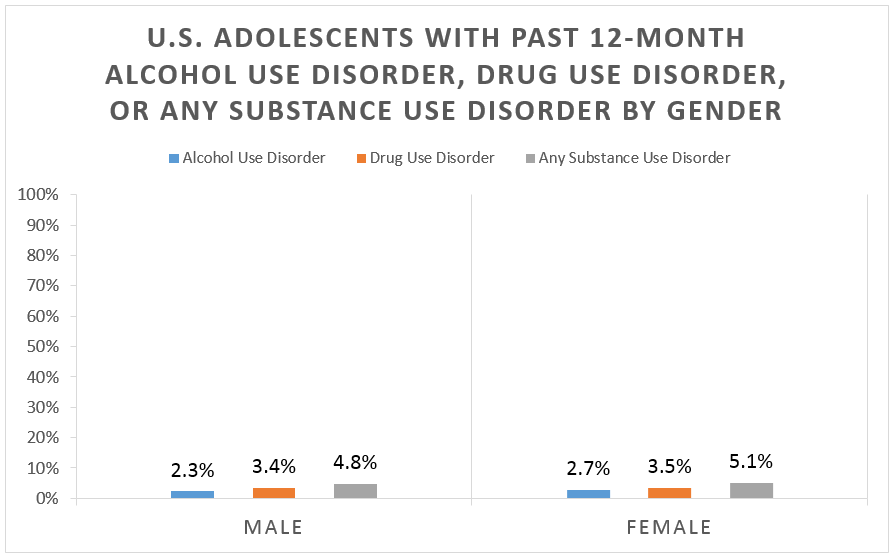
AGE
For adults 18 and older, young adults 18-29 have the highest rates of alcohol use disorder both currently and over the course of their lives. Beginning with young adulthood, the prevalence of alcohol use disorder decreases as individuals get older.
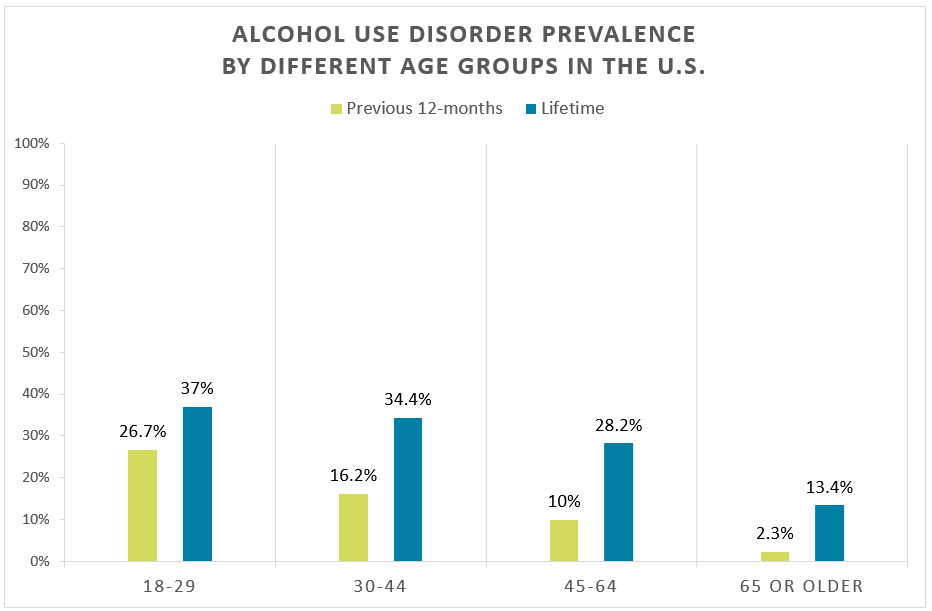
Like alcohol use disorder, young adults ages 18-29 have the highest rates of drug use disorder both currently and over the course of their lives. Rates decrease as individuals get older.
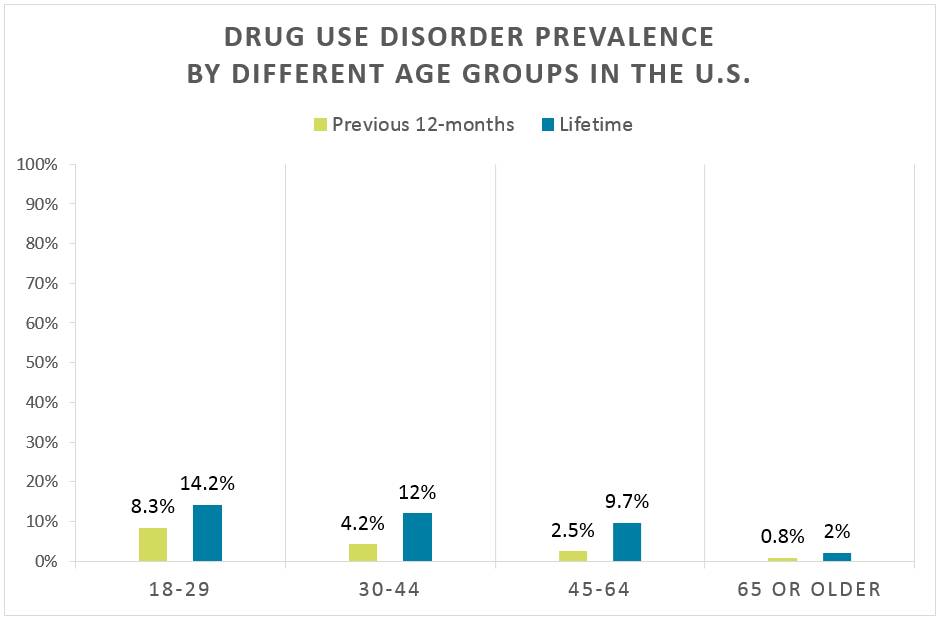
Adolescents generally have low rates of DSM-IV alcohol (2.5% overall), other drug (3.4%), and any substance use disorder (5%), compared to their older counterparts. As illustrated in the figure below, adolescent rates of substance use disorder decreased considerably across the early 2000s.
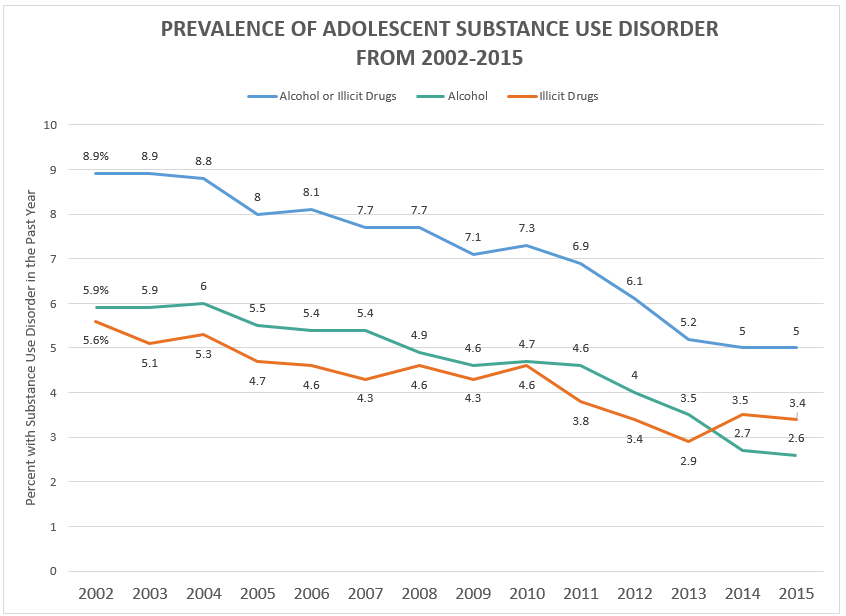
RACE AND ETHNICITY
Native American U.S. adults have the highest rates of alcohol use disorder during the past 12 months, as well as over the course of their lives, compared to other races/ethnicities. Asian/Pacific Islanders have the lowest rates.
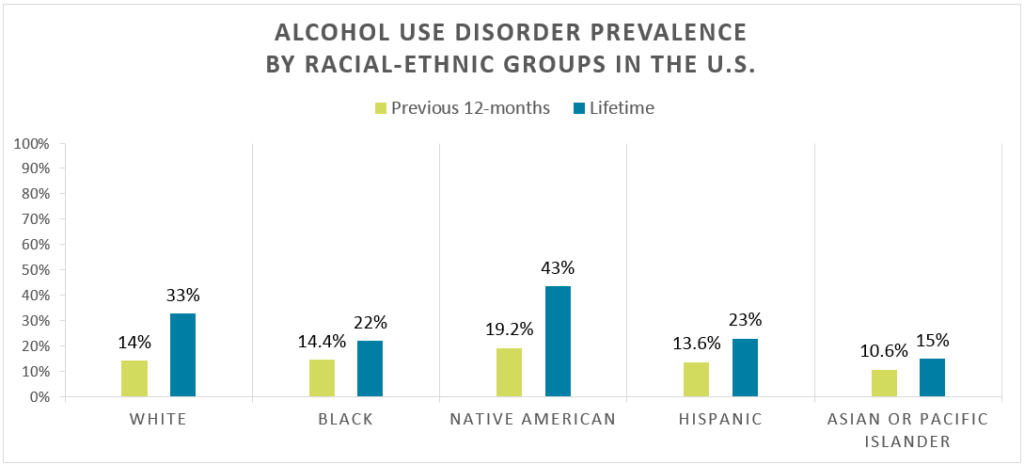
The pattern for rates of drug use disorder by race/ethnicity are similar to that for alcohol use disorder, with Native Americans having the highest rates and Asian/Pacific Islanders the lowest.
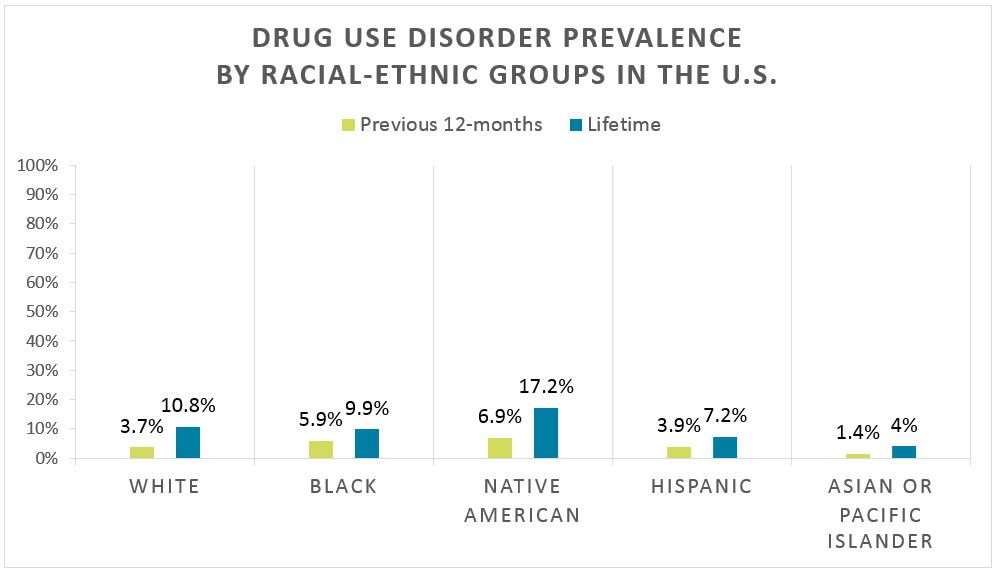
SOCIOECONOMIC STATUS
As illustrated by the figure below, the prevalence rates of alcohol use disorder remain relatively consistent across household/family income categories.
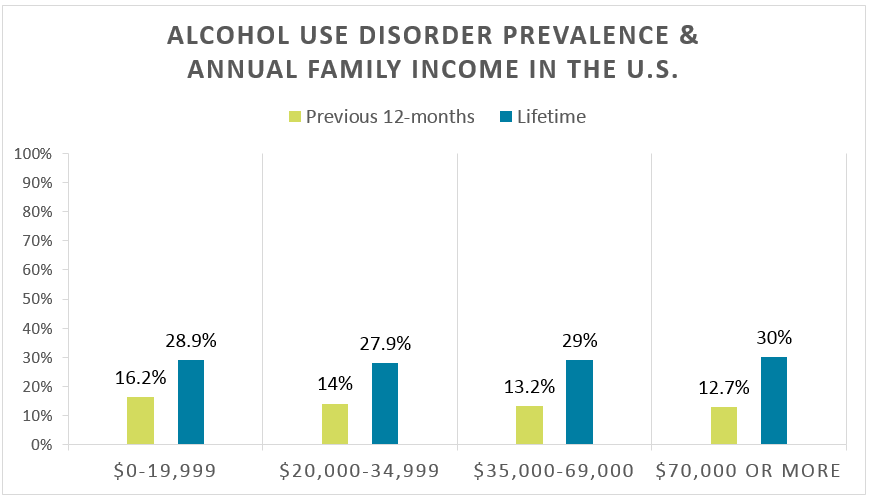
On the other hand, rates of drug use disorder are higher for individuals with lower family/household incomes. Those with incomes of $70,000 or higher have the lowest rates of drug use disorder in the past 12 months and over the course of their lives.
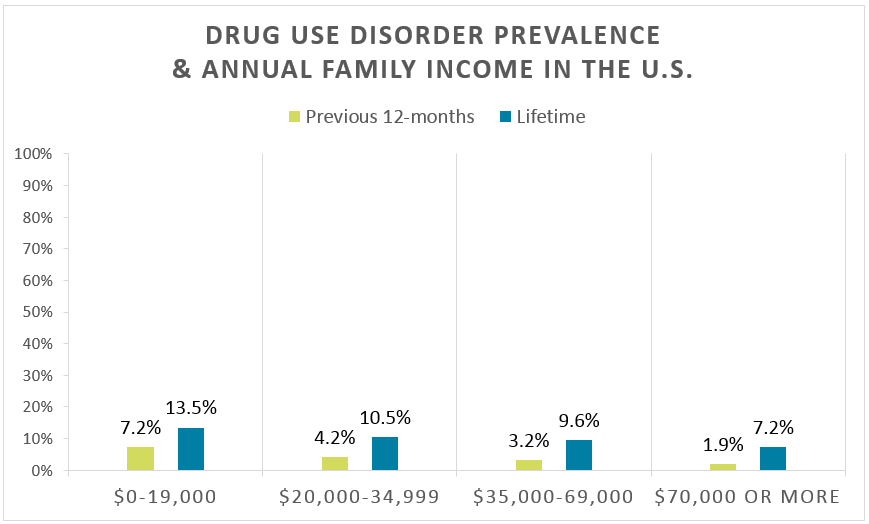
EDUCATION
Contrary to popular belief, studies show that individuals with some college education or higher have higher rates of alcohol use disorder than individuals who have not graduated high school, particularly over the course of their lives. Their rates in the past 12 months are similar, however.
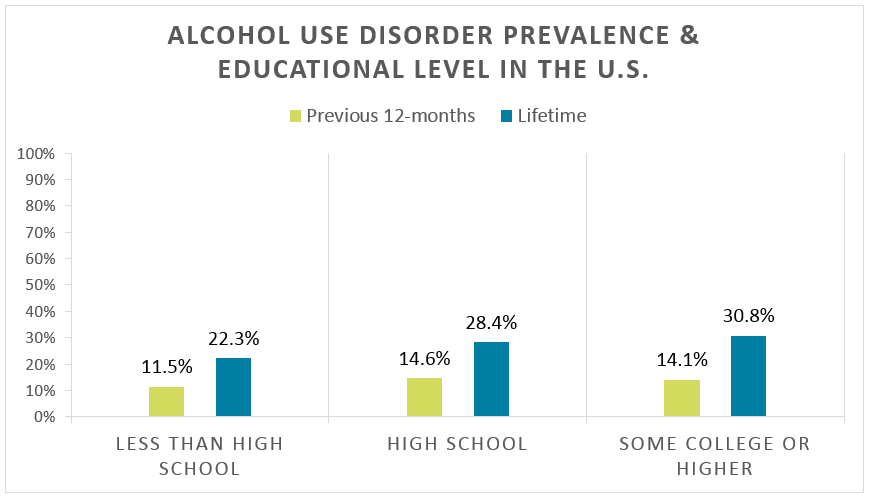
On the other hand, for drug use disorders other than alcohol, compared to those who attended at least some college, individuals with lower levels of education have higher prevalence rates, both in the past 12 months and over the course of their lives.
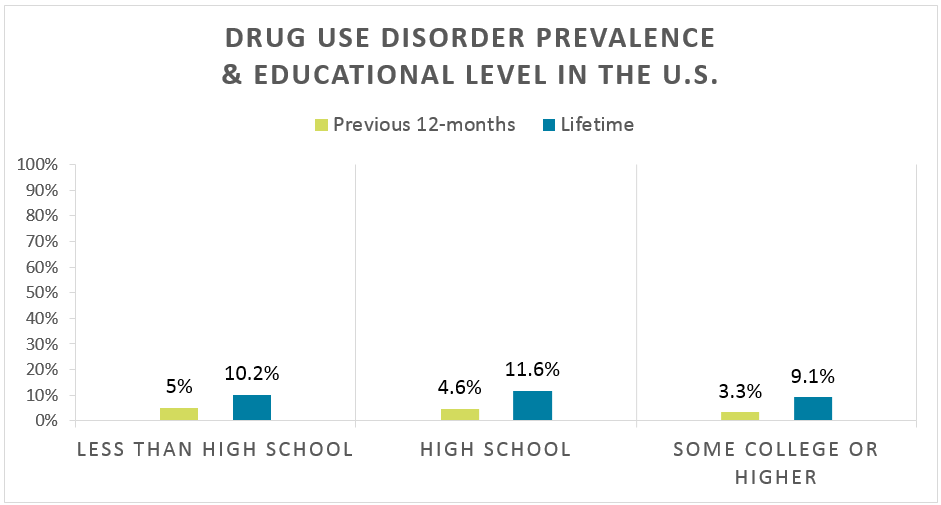
LOCATION
As defined in the U.S. Census, urban areas “represent densely developed territory, and encompass residential, commercial, and other non-residential urban land uses,” while rural areas “encompass all population, housing, and territory not included within an urban area.”
The prevalence of alcohol use disorder is similar for individuals living in urban versus rural areas over the course of their lives, but is higher for urban dwellers in the past 12 months.
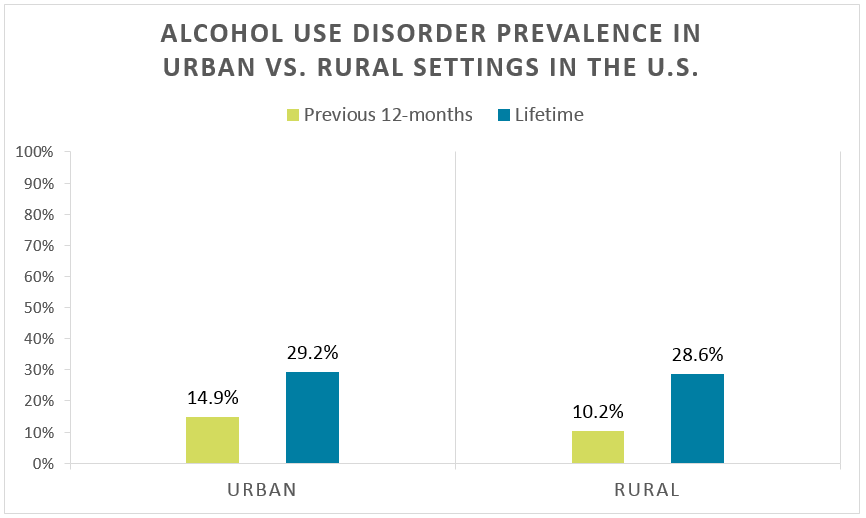
Rates of drug use disorder other than alcohol are similar for individuals in urban versus rural U.S. areas both during the past 12 months and over the course of their lives.
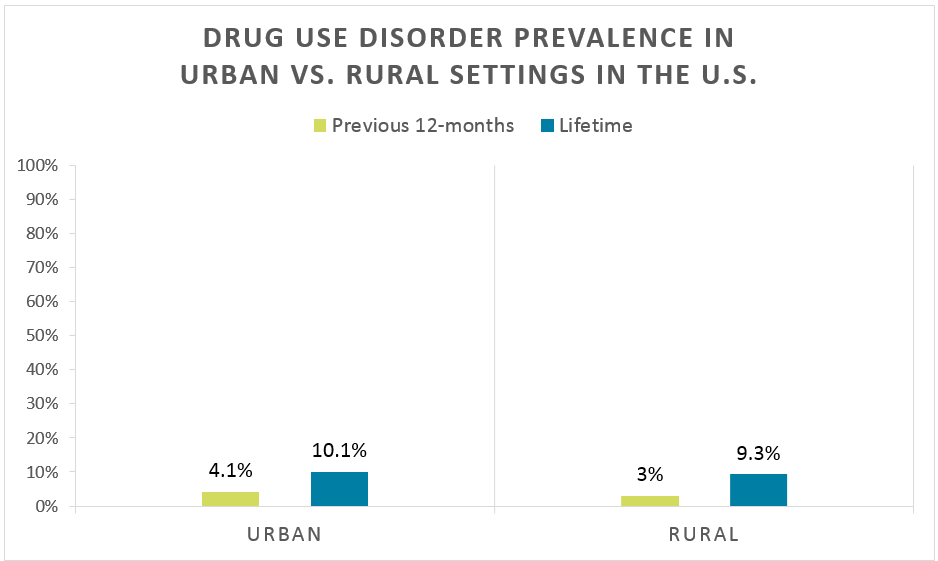
Rates of alcohol use disorder are somewhat lower for individuals living in northeastern and southern states compared to those living in western states, both for the past 12 months and over the course of their lives.
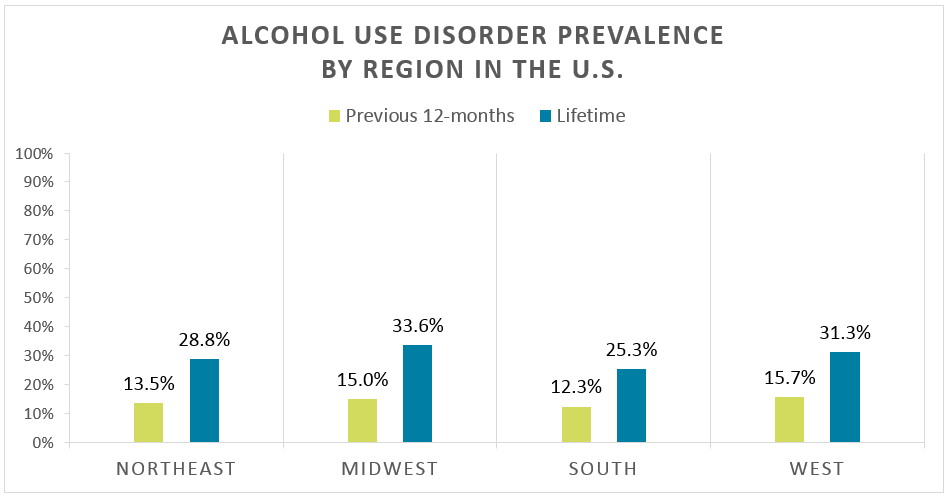
Similarly, individuals living in Midwestern and southern states have lower rates of drug use disorder, compared to individuals living in western states both during the past 12 months and over the course of their lives.
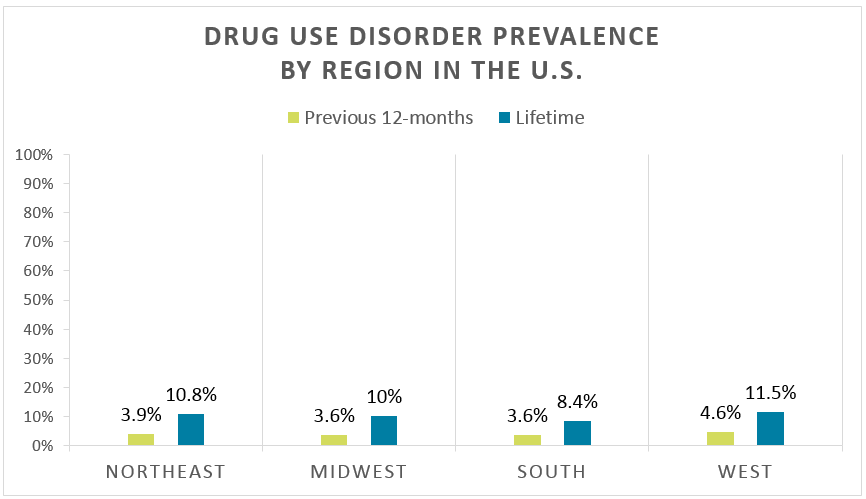
GLOBAL PREVALENCE
The World Health Organization conducts research on health outcomes across the globe. In order to compare drinking by country, they created the Patterns of Drinking score. The score represents how cultures consume alcohol, not how much alcohol they consume. Scores reflect the prevalence of drinking as well as the centrality of drinking within that country’s culture, with a score of 1 indicating least risky drinking patterns and a score of 5 indicating most risky drinking patterns. Within any given country, the higher the score, the higher the alcohol-inferable burden of disease.
Of note, countries with high patterns of drinking scores include Russia and Mexico. Western European countries (e.g., Spain) have low patterns of drinking scores. The United States and Canada have more intermediate scores, with slightly higher scores among South American countries (e.g., Brazil).
